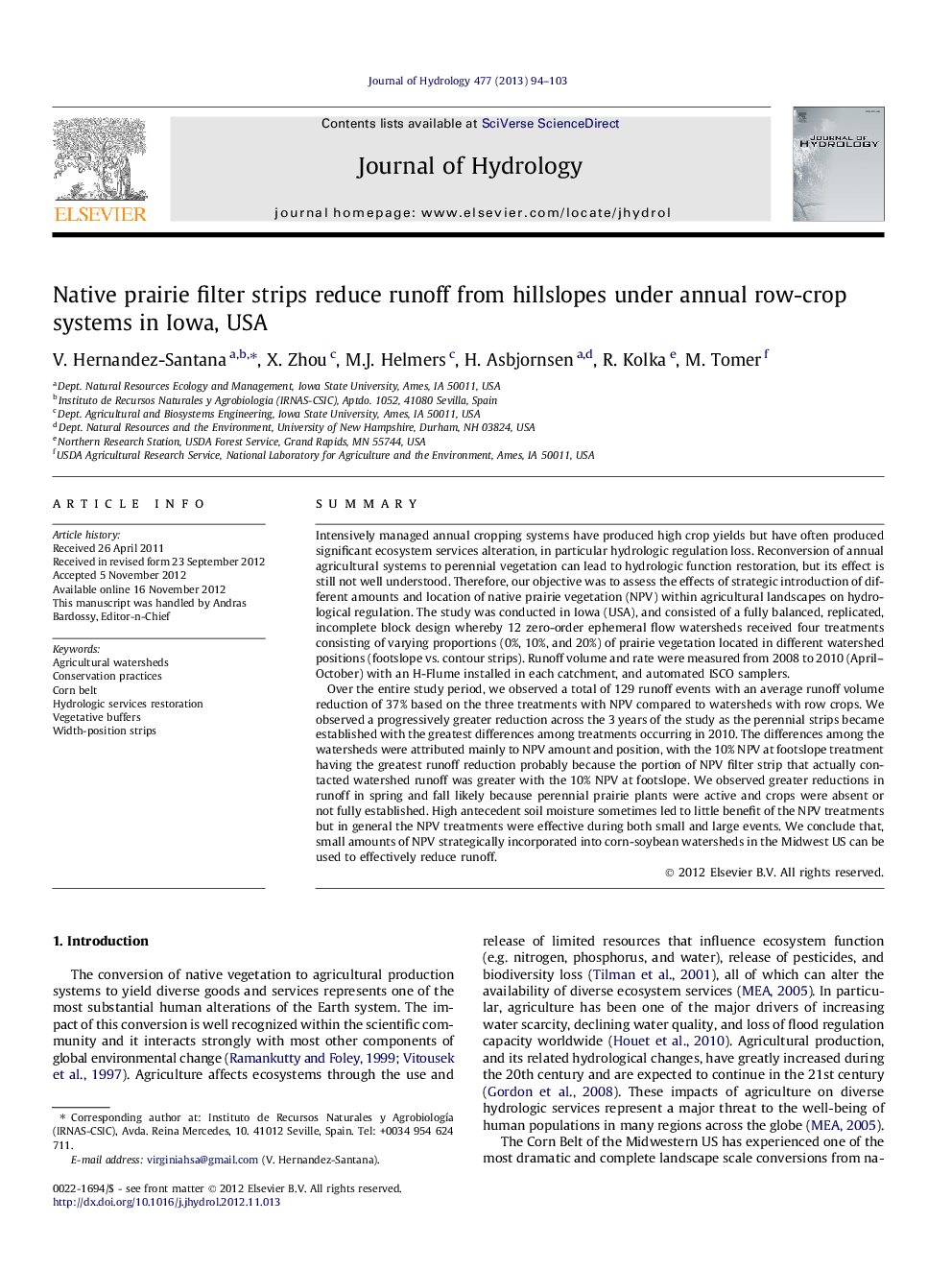| کد مقاله | کد نشریه | سال انتشار | مقاله انگلیسی | نسخه تمام متن |
|---|---|---|---|---|
| 4576574 | 1629971 | 2013 | 10 صفحه PDF | دانلود رایگان |

SummaryIntensively managed annual cropping systems have produced high crop yields but have often produced significant ecosystem services alteration, in particular hydrologic regulation loss. Reconversion of annual agricultural systems to perennial vegetation can lead to hydrologic function restoration, but its effect is still not well understood. Therefore, our objective was to assess the effects of strategic introduction of different amounts and location of native prairie vegetation (NPV) within agricultural landscapes on hydrological regulation. The study was conducted in Iowa (USA), and consisted of a fully balanced, replicated, incomplete block design whereby 12 zero-order ephemeral flow watersheds received four treatments consisting of varying proportions (0%, 10%, and 20%) of prairie vegetation located in different watershed positions (footslope vs. contour strips). Runoff volume and rate were measured from 2008 to 2010 (April–October) with an H-Flume installed in each catchment, and automated ISCO samplers.Over the entire study period, we observed a total of 129 runoff events with an average runoff volume reduction of 37% based on the three treatments with NPV compared to watersheds with row crops. We observed a progressively greater reduction across the 3 years of the study as the perennial strips became established with the greatest differences among treatments occurring in 2010. The differences among the watersheds were attributed mainly to NPV amount and position, with the 10% NPV at footslope treatment having the greatest runoff reduction probably because the portion of NPV filter strip that actually contacted watershed runoff was greater with the 10% NPV at footslope. We observed greater reductions in runoff in spring and fall likely because perennial prairie plants were active and crops were absent or not fully established. High antecedent soil moisture sometimes led to little benefit of the NPV treatments but in general the NPV treatments were effective during both small and large events. We conclude that, small amounts of NPV strategically incorporated into corn-soybean watersheds in the Midwest US can be used to effectively reduce runoff.
► Runoff was reduced by 37% by the prairie strips compared to 100% row crop.
► 10% prairie strategically incorporated into watersheds enough to reduce runoff.
► Buffer effectiveness increased along the years.
► Greater runoff reductions in spring–fall by prairie strips compared to 100% crops.
Journal: Journal of Hydrology - Volume 477, 16 January 2013, Pages 94–103